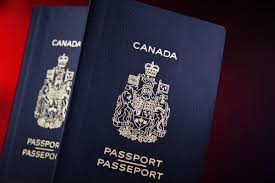If you’re looking to become a permanent resident in Canada, there are several efficient routes available to make that happen quickly. While the process may seem complex, knowing the right programs and their requirements can make things much simpler. Canada offers various options to suit different backgrounds and skills, which means you can choose a pathway that best matches your situation.
From the Express Entry System to the Provincial Nominee Program, each option has unique benefits depending on your qualifications. It’s important to understand the details of each program to determine which one fits you best. Whether you have specialized work experience, are a skilled professional, or already have a job offer, there’s likely a pathway tailored to you. Knowing the timelines and requirements can help you get to Canada faster than you think.
Canada is eager to attract new residents, and the immigration system is designed to accommodate a range of talents and expertise. This is why it’s essential to choose the right route early on in your application process. This ultimate guide will help you to understand the top programs that can help you get Canadian permanent residency in the shortest time possible, highlighting what makes each option fast and effective.
1. Express Entry System
The Express Entry System is the go-to choice for most people looking to gain permanent residency in Canada. This system prioritizes applicants based on factors like education, work experience, age, and language skills. To begin, you need to create an online profile that includes these details. Once submitted, your profile will be assigned a score based on a points system known as the Comprehensive Ranking System (CRS). Those with higher scores are more likely to receive an Invitation to Apply (ITA) for permanent residency.
If you get an ITA, you’ll need to submit all required documents, such as medical records, proof of work experience, and language test results, within a specified period. Processing your application after receiving an ITA typically takes around six months. The Express Entry System is highly popular because it allows many skilled workers to secure residency in a relatively short time frame, provided their profile scores well.
2. Provincial Nominee Program (PNP)
Canada’s Provincial Nominee Program (PNP) is another excellent option, especially if you have a specific province where you want to live and work. Each Canadian province (except Quebec) has its own PNP, which allows them to nominate individuals who meet local labor needs. Some provinces prioritize workers with certain skills or job offers from local employers, making the PNP route faster if you meet their requirements.
If you’re nominated by a province, it not only boosts your profile in the Express Entry pool but also increases your CRS score significantly, making it more likely that you’ll receive an ITA. Keep in mind that some PNP streams require a job offer, while others may focus on individuals with experience in in-demand sectors. Once nominated, your application is fast-tracked for permanent residency.
3. Atlantic Immigration Pilot Program (AIPP)
The Atlantic Immigration Pilot Program (AIPP) is designed to bring workers to Canada’s Atlantic provinces: Nova Scotia, New Brunswick, Prince Edward Island, and Newfoundland and Labrador. To qualify for this program, you need a valid job offer from an employer in one of these provinces. The AIPP is appealing because it not only helps fill local job shortages but also speeds up the permanent residency process for qualified applicants.
The AIPP works in collaboration with employers, meaning you’ll need a specific job offer to apply. This program is ideal for those looking for opportunities in sectors like healthcare, education, and manufacturing, which are in high demand in Atlantic Canada. Once you’re accepted into the program, the processing time for your permanent residency application is typically quicker than other streams.
4. Agri-Food Pilot
If your work experience falls within agriculture or food production, the Agri-Food Pilot could be the fastest route for you. This program focuses on filling labor shortages in these essential industries, especially in rural areas. You’ll need to have a valid job offer in an eligible occupation within the agri-food sector to qualify for this pilot program.
One advantage of the Agri-Food Pilot is that it’s tailored to specific roles, so if your experience aligns with the program’s requirements, you could be fast-tracked for permanent residency. The program also offers additional support for workers transitioning from temporary to permanent resident status, making the overall process more efficient.
5. Caregiver Programs
Canada’s Caregiver Programs are another pathway for those who have experience working as home childcare providers or in-home support roles. If you have at least two years of relevant experience, you may qualify for permanent residency through one of these programs. The Caregiver Programs are especially beneficial for those who have been working in Canada already, as they allow you to transition to permanent residency with fewer delays.
The processing times for these applications are usually shorter if you meet the qualifications, and caregivers are often in high demand across Canada. This makes the Caregiver Program an attractive option if you’re already working in this field or have a job offer waiting for you.
Securing Canadian permanent residency doesn’t have to be a long or complicated process if you know which pathway suits your situation best. Whether you’re a skilled professional using the Express Entry System, a caregiver, or someone with a job offer in a specific province, there’s likely a fast route to residency for you. Keep in mind that each program has its own set of requirements, so thorough preparation is key.
By choosing the right pathway and ensuring your application is complete and accurate, you can speed up your journey to becoming a permanent resident. Keep an eye on government updates to ensure you’re working with the most current information. This way, you’ll maximize your chances of success and be well on your way to calling Canada your new home.









